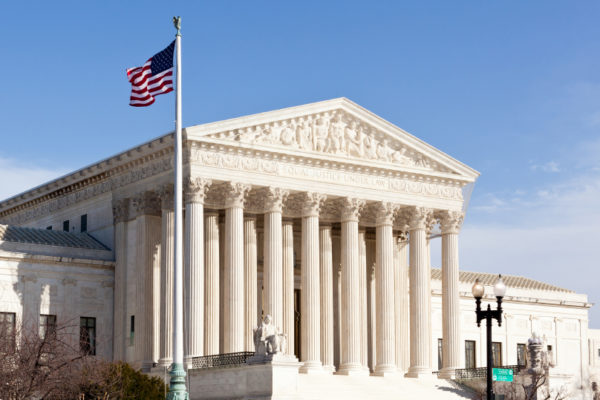The U.S. Supreme Court will soon decide its first case under the 2011 America Invents Act on the extent to which a company can commercialize an invention prior to filing a patent application.
The court should uphold the intermediate-level appeals court opinion and continue to protect the public interest by maintaining fair access to new ideas and lower costs. That would require companies to begin the patent process within a year after they start reaping benefit from an invention.
Bringing to the public the details of inventions that are new and substantially different from what others have done before is perhaps the most important public policy objective of patent law. A patent becomes public information when granted, and it must disclose enough details about the invention so that a skilled practitioner in the particular technology field can make the invention and put it into practice just by studying the patent’s disclosures.
Among other benefits, this creates an incredibly rich repository of technical know-how for others to study and upon which to possibly improve.
Although a company might love to commercialize a patent for a substantial period and file for patent protection much later, allowing this would enable the owner of an invention to gain protection for more than the permitted 20 years. Although owners of inventions that are both new and different deserve protection, the court balances that protection against the public good gained by encouraging fair pricing and continuing innovation.
Whether an invention meets the “new and substantially different” criteria, and thus is patentable, depends on a comparison of the invention with the “prior art.” Prior art is evidence of what either this inventor or others have done in the past in the particular field of technology. Prior art can be created either by the inventor of the invention or by someone else. For prior art created by the inventor, the creation of this evidence triggers the beginning of a one-year period during which a patent application must be filed.
In the United States, courts have long interpreted patent law’s prior art provisions such that prior patents, printed publications, and public uses must have been reasonably accessible to the public in order to be prior art.
What amounts to “publicly accessible,” though, varies a bit among these three types of prior art. On the other hand, courts have for a long time held that a sale of a product or service incorporating the invention to be prior art even when the sale is strictly confidential between seller and buyer because it is often easy for companies to keep industrial sales relatively secret.
The Supreme Court is revisiting this principle because the America Invents Act made a relatively slight change by listing the four kinds of prior art and then following it with “or otherwise available to the public.” Some, including the U.S. Patent and Trademark Office, have argued that this addition qualifies all of the previously listed types of prior art and that, therefore, the law has been changed so that sale activity now must be public to some degree to be considered prior art. That is more protection than companies need and is not good public policy.
I signed a friend-of-the-court brief to the U.S. Supreme Court on behalf of a large number of patent scholars across the country urging the court to affirm the intermediate-level appeals court opinion that the old law had not been changed. Our position is that Congress did not intend to change prior law and that even the most confidential sales (or contracts of sale, or offers to sell) by owners of inventions start the one-year clock during which a patent application must be filed.
A contrary conclusion would not represent a linguistically sensible interpretation of the new statutory language and would thwart the fundamental goal of patent law: to get the details of inventions out into the public as soon as possible in return for the higher prices and extra profits that exclusive patent rights can provide.
John Allison, J.D., is a professor emeritus in the McCombs School of Business at The University of Texas at Austin.
A version of this op-ed appeared in the San Antonio Express News and the Abilene Reporter News.




